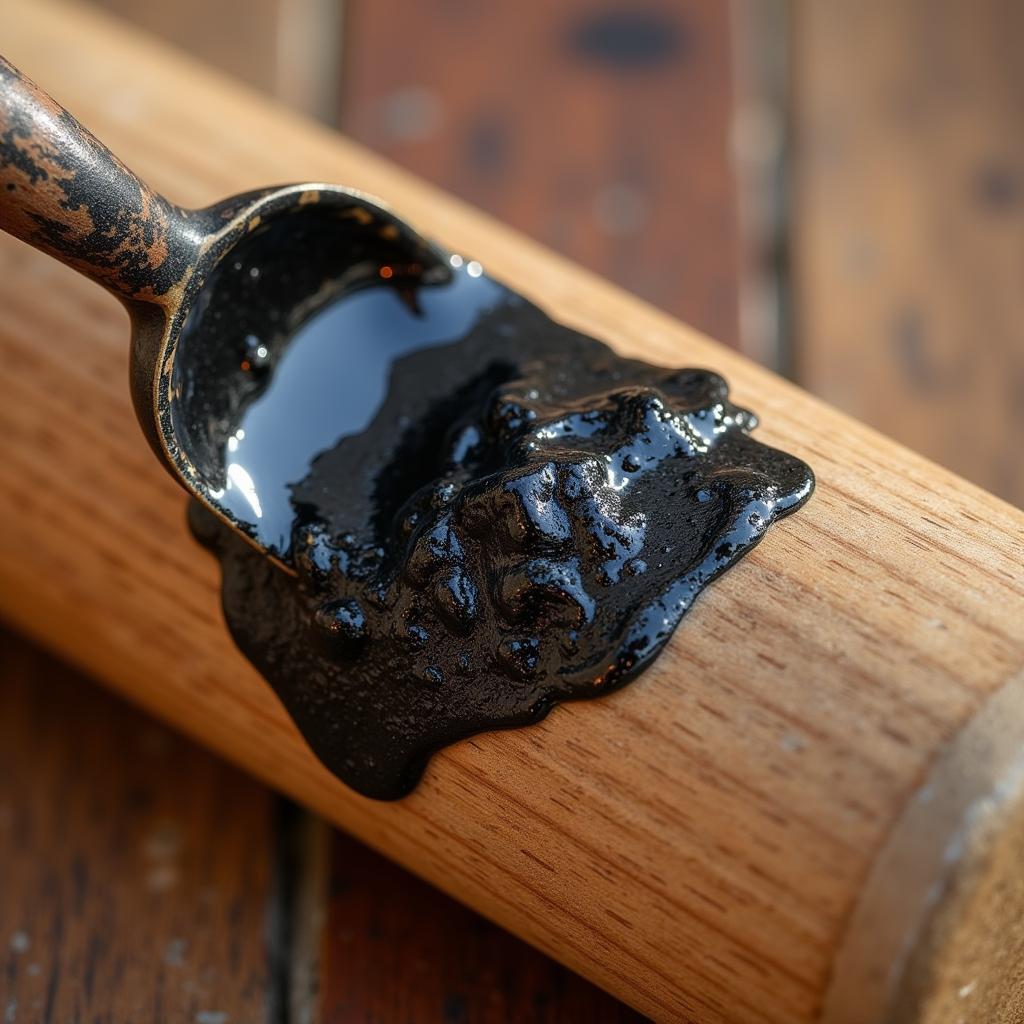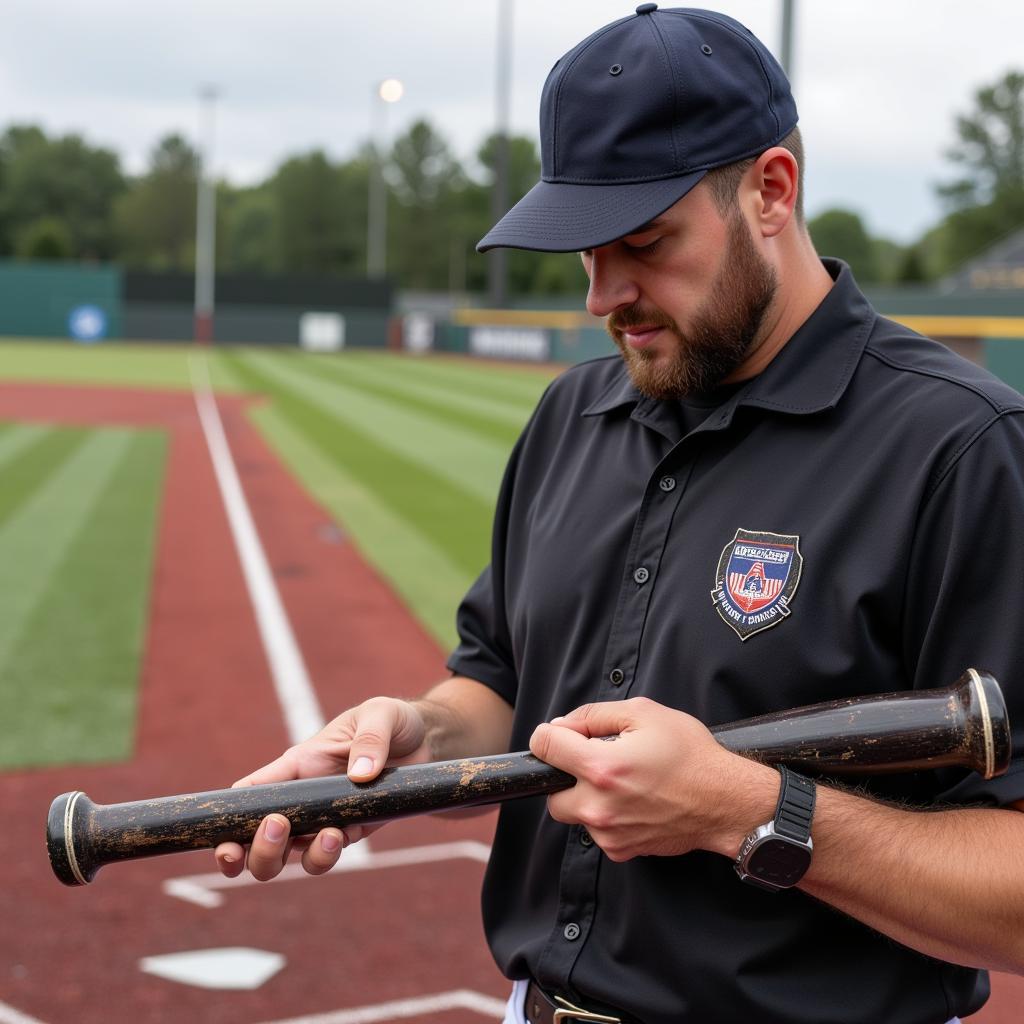Unveiling the Mystery of Real Pine Tar Baseball
October 13, 2024Real Pine Tar Baseball bats have been a point of intrigue and debate among players, fans, and officials alike. The sticky substance, derived from the process of making turpentine from pinewood, finds itself at the heart of baseball tradition, intertwined with performance and regulation.
 Close-up of Pine Tar on a Baseball Bat
Close-up of Pine Tar on a Baseball Bat
What is Real Pine Tar Used For in Baseball?
The primary function of pine tar in baseball is to enhance a batter’s grip. The sticky residue provides a tackier surface, improving control and preventing the bat from slipping out of a player’s hands, particularly in humid conditions or after contact with a sweat-slicked batting glove. This enhanced grip allows for more confident swings and, theoretically, more solid contact with the ball.
However, real pine tar baseball isn’t without its controversies. While its use to improve grip is generally accepted, applying it above the legal limit can raise objections.
The Great Pine Tar Debate: Rules and Regulations
 Umpire Inspecting Bat for Pine Tar
Umpire Inspecting Bat for Pine Tar
Major League Baseball rules allow batters to apply pine tar to their bats, but with restrictions. Rule 1.10(c) stipulates that pine tar can only be applied to the handle of the bat, not exceeding 18 inches from the knob. The rule aims to prevent an unfair advantage by potentially increasing the “sweet spot” of the bat or impacting ball flight.
This rule has led to several infamous incidents, most notably the “Pine Tar Incident” of 1983 involving Kansas City Royals’ George Brett. Brett’s go-ahead home run was nullified due to excessive pine tar on his bat, sparking a heated debate about the rule’s interpretation and fairness. The incident, later overturned on appeal, cemented the rule’s place in baseball lore and highlighted the fine line between tradition and regulation.
Choosing the Right Pine Tar: A Batter’s Guide
Not all pine tar is created equal. Different brands offer varying levels of stickiness, viscosity, and even color. Here’s a quick guide for players looking to find the perfect pine tar for their needs:
- Stickiness: Some players prefer a tackier grip, while others opt for a less aggressive feel. Experimenting with different brands is key to finding the right level of stickiness.
- Viscosity: Pine tar comes in different thicknesses. Thinner formulas are easier to apply and spread, while thicker versions offer a more substantial grip.
- Color: While purely aesthetic, some players prefer a darker pine tar that blends in with the bat, while others don’t mind a lighter shade.
Ultimately, the best real pine tar baseball product comes down to personal preference and playing style.
Pine Tar Myths and Misconceptions
Despite its long-standing use in baseball, several myths and misconceptions surround real pine tar.
Myth: Pine tar makes the ball travel farther.
Fact: While some believe pine tar can increase bat speed due to a better grip, there is no scientific evidence to suggest it directly impacts ball flight or distance.
Myth: Pine tar damages baseballs.
Fact: Pine tar does not damage baseballs.
 Applying Pine Tar to a Bat
Applying Pine Tar to a Bat
The Future of Real Pine Tar in Baseball
Real pine tar baseball, a blend of tradition and practicality, will likely remain an integral part of the game for years to come. As long as batters strive for a better grip and pitchers seek an edge, the sticky substance will continue to be a fixture in dugouts and a topic of discussion among baseball enthusiasts.
While controversies may arise and rules may evolve, the pursuit of a better grip and the stories associated with real pine tar baseball ensure its lasting legacy in the sport’s rich history.